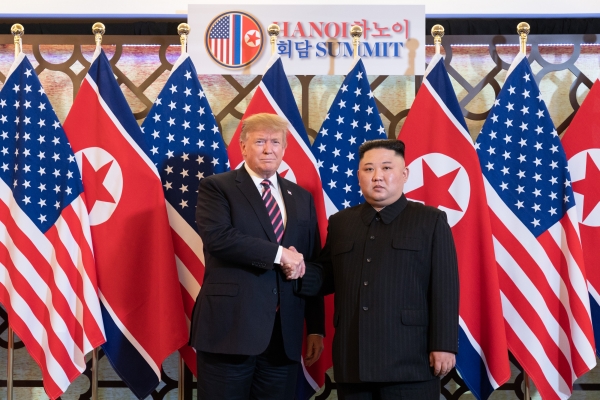
Before the summit
On Jan. 1, Kim Jong-un, the Chairman of the Workers’ Party of Korea, sent a positive message about holding the second North Korea – United States summit through his New Year’s address, although he also said he would seek a new path if there were unilateral U.S. sanctions and pressure.
Responding to Kim’s speech, Donald Trump, the president of the United States of America, tweeted that he is also looking forward to meeting with Chairman Kim who realizes that North Korea possesses great economic potential. Accordingly, from the start of 2019, North Korea and the U.S. revealed that they are of hoping for a second summit.
On Jan. 17, Kim Yong-chol, the vice chairman of the Worker’s Party of Korea, visited Washington D.C. and worked on coordinating the second summit. President Trump agreed to hold a summit in late February and on Feb. 5, Donald Trump officially announced that he will hold the second North Korea – United States summit with Kim Jong Un in Vietnam on Feb. 27 to 28, and stressed that he continues his historic effort toward creating peace on the Korean Peninsula.
Vietnam holds historical and political symbolism; becoming a friendly country in the face of hostility with the U.S.
In Vietnam
On Feb. 27, North Korean leader Kim Jong-un and U.S. President Donald Trump met in Hanoi, Vietnam. It was the first reunion in 260 days since last year’s North Korea–United States Singapore Summit. After signing the joint statement in Sentosa, Singapore, North Korea returned the remains of 55 soldiers to the U.S. military from the Korean War, and have taken basic steps to permanently dismantle the Dongchang-ri missile engine test site and launch pad. The U.S. has loosened its restrictions on international humanitarian aid groups that have been blocked by sanctions against North Korea. People expected a rapid denuclearization of the Korean Peninsula and a rapid change in North Korea – U.S. relations. However, relations with North Korea and the U.S. have been stalled for some time. The second summit was expected to bring this deadlock to an end.
Firstly, on Feb. 28, the two leaders had a one-on-one meeting. Afterwards, the leaders and their aides went into a closed-room meeting. However, a few hours later, the summit was called off. The signing ceremony was canceled and the official lunch left uneaten. President Trump held a press conference on the failure of the agreement, and shortly after he finished, he flew to the United States on a private plane from Vietnam’s Noibai International Airport. Kim stayed for his schedule in Vietnam, but left on March 2, earlier than originally scheduled.
After the Summit
The breakdown of the summit resulted from a difference of opinion regarding the U. S. providing relief from sanctions and North Korea’s steps to dismantle its nuclear weapons program. Trump said at the press conference that “basically, they wanted the sanctions lifted in their entirety, and we couldn’t do that.” However, Ri Yong-Ho, North Korea’s foreign minister, said that what they demanded was a partial lifting of the sanctions which disrupts the economy and people’s lives. Mike Pompeo, Secretary of State, reiterated that North Korea demanded full sanctions relief with unclear concessions that they were not able to justify.
Although the summit ended without any signatures on joint statements, the two countries did not criticize each other aggressively or shift the blame for the failure of the agreement. Nevertheless, it is certain that two sides remain far apart on some key issues, and it will require a lot of effort for a détente between North Korea and the United States.


